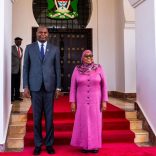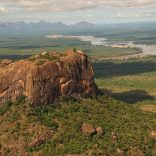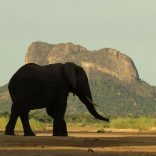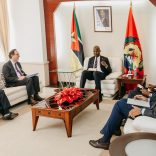Mozambique: Man arrested with elephant tusks, two others escape in Mágoè, Tete province
Mozambique: Government approves regulation on international trade in endangered species

File photo: Ferhat Momade
The Government of Mozambique has approved the Regulation on International Trade in Endangered Species of Wild Fauna and Flora, within the framework of the Convention on International Trade in Endangered Species of Fauna and Flora (CITES).
Mozambique ratified the international CITES treaty in December, 1981.
Council of Ministers spokesman Filimão Suaze explained that the regulation establishes the rules relating to protection. Suaze, who is also deputy minister of Justice, Constitutional Affairs and Religious Affairs, said the regulation would further facilitate the control of international trade in species and species of endangered species of fauna and flora listed in CITES.
According to the Mozambican Administration of Conservation Areas (ANAC) more than
8,400 species of wildlife are critically endangered worldwide. In 2022, the ANAC catalogued nearly 10,000 species of flora and fauna. The number of plant species is 5,743, of which about 250 are endemic.
Terrestrial fauna already catalogued totals 4,271 species, including insects, birds, mammals and amphibians. Fisheries institutions in Mozambique continue to identify new species.
At the same session, the government ratified the agreement for the establishment of the
ZIMOZA Transboundary Conservation Area, covering Mozambique, Zambia and Zimbabwe,
signed in Harare last July.
The agreement was signed by President Filipe Nyusi, his Zimbabwean counterpart
Emmerson Mnangagwa, and Zambian tourism minister, Rodney Sikumba.
With an area of 38,435 square kilometres, the conservation area covers three districts along the Zambezi river in the central province of Tete, namely: Mágoè, Lower Cahora and Zumbo.
In Zimbabwe it covers two districts, Mbire and Makonde, and in Zambia the district of
Luangwa.
At the same time, the Council of Ministers approved the regulation on aerial surveys and
filming for civil purposes, an instrument that allows studies of both terrestrial and aerial resources using drones.
Suaze explained that the regulation establishes the principles, rules and guidelines relating to the activities of aerial surveys and filming for civil purposes on Mozambican territory.
The regulation establishes the supply of products to entities and users, and applies to
operators and user entities operating outside the national territory, with the exception of individuals whose activities are for leisure and entertainment or personal purposes.













Leave a Reply
Be the First to Comment!
You must be logged in to post a comment.
You must be logged in to post a comment.